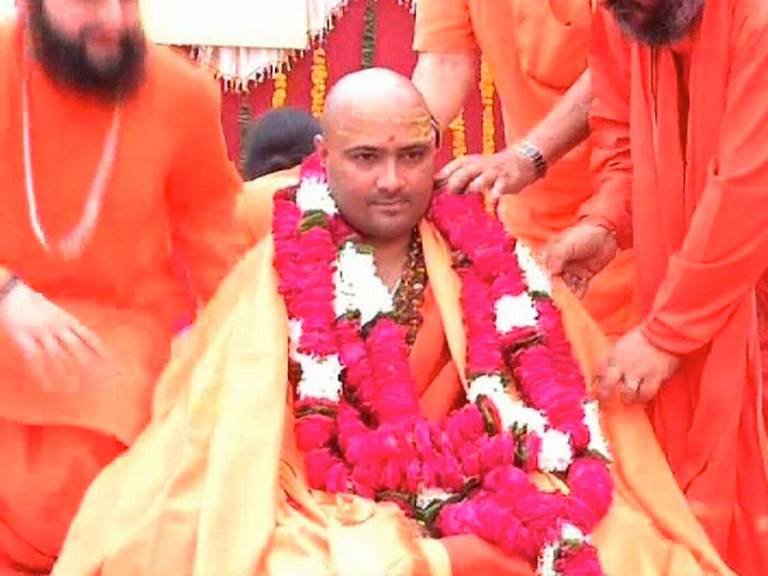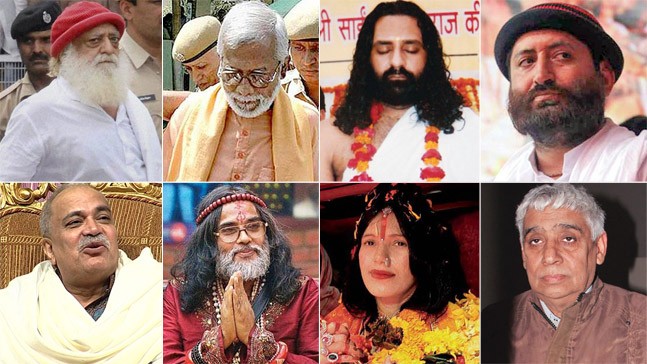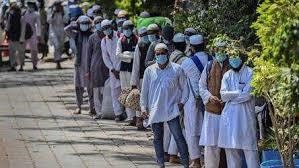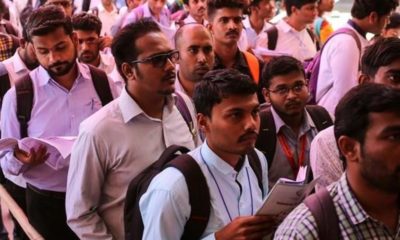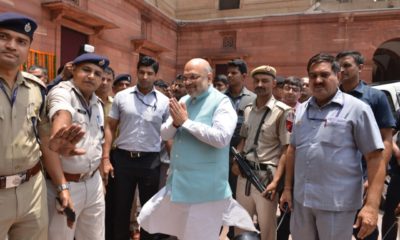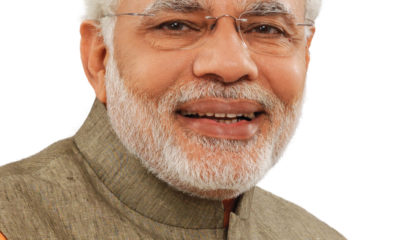Feature
ABAP releases list of 14 ‘Fake Babas’ including Asaram, Ram Rahim; Radhe Ma
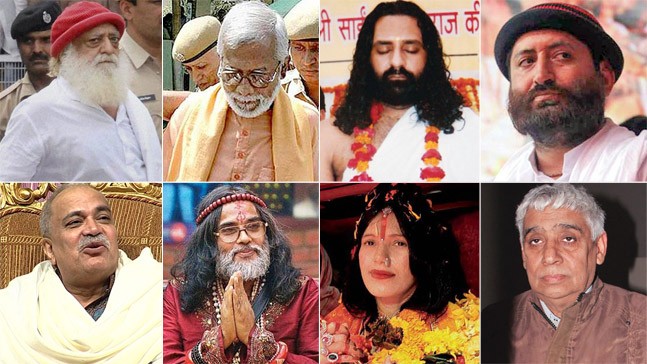
New Delhi: After some shameful act of self-proclaimed Godmen all over the country, the Sant Samaj has now opened a front against suck fake babas and a list of 14 babas has been released in the All India Akhara Parishad meeting in Allahabad recently.
The Akhil Bharatiya Akhara Parishad (ABAP), an apex body of Hindu sadhus, on Sunday released a list of 14 ‘fake babas’, in response to recent controversies surrounding self-styled godmen.
The list of 14 babas issued by the Sant society are as follows: Asaram Bapu alias Ashumal Sirmalani, Sukhwinder Kaur alias Radhe Ma, Sachin Datta alias Sachchidanand Giri, Gurmeet Ram Rahim alias Dera Sirsa, Babas who are involved in the controversy after going into to the popular reality show Big Boss, Om baba alias Niramal Baba, Nirmaljeet Singh alias Nirmal Baba, Yashadhari Bhimanand alias Shivamurthy Dwivedi, Accused of Samjhauta Express blast Swami Aseemanand, lodged in jail, Rampal in jail, son of Asaram Bapu, Narayan Sai, Allahabad Received Om Namah Shivaya Baba, Allahabad Acharya Kushmuni, Bareilly Malkhan Singh, Bareilly Jupiter Giri.
The Akhil Bharatiya Akhara Parishad has also demanded a law to ensure a crackdown on “rootless cult leaders”.
The ABAP, an umbrella organisation of 13 akharas, has also demanded a law to ensure a crackdown on “rootless cult leaders”. The list includes names like Asaram Bapu, Sant Rampal and Gurmeet Ram Rahim Singh, who was recently convicted for raping two female followers.
ABAP president Swami Narendra Giri, told media persons: “We appeal to even the common people to beware of such charlatans who belong to no tradition and by their questionable acts, bring disrepute to sadhus and sanyasis.”
The 14 blacklisted spiritual leaders are Ram Rahim, Asaram and son Narayan Sai, Radhe Maa aka Sukhwinder Kaur, Nirmal Baba aka Nirmaljeet Singh, Khushi Maharaj, Sachidanand Giri aka Sachin Datta, Om Baba aka Vivekanand Jha, Ichchhadhari Bhimanand aka Ram Murat Dwivedi, Rampal, Swami Aseemanand, Om Namo Shivay Baba, Brihaspati Giri and Malkan Giri.
List of 14 ‘Fake Babas’ released by ABAP, including Asaram, Ram Rahim; Radhe Ma:
However, the ABAP has in the past supported some of these godmen. When asked why he and other akhara heads had earlier feted such “charlatans” and welcomed them into their monasteries, Giri told the Telegraph: “It happened because some people misled us. We’ll be careful in future.”
He appealed to “common people to beware of such charlatans” and said copies of the list would be sent to the Centre, state governments and opposition parties with the demand for a law to check these people’s activities.”
According to The Telegraph. “We’ll expose these fake sadhus and write to the government to investigate their activities and arrest them,” said Giri, who has held two meetings with Uttar Pradesh chief minister Adityanath in the past five months “for sadhus’ welfare”.
The list was made public after a brief meeting of representatives of various akharas at Math Baghambari Gaddi in Allahabad’s Allahpur. According to media persons, Giri told reporters: “We are going to send copies of this list to the Centre, the state governments as well as all the opposition parties with the demand that a strong legislation be brought to check the activities of these self-styled cult leaders.”
The report stated that another list of 28 fake godmen will be released by the ABAP after Diwali.
“We appeal to even the common people to beware of such charlatans who belong to no tradition and by their questionable acts, bring disrepute to sadhus and sanyasis,” Giri said while announcing the list.
A day before the release of the list, Giri had lodged an FIR claiming that he had received death threats from callers, who he said warned him of dire consequences if the group passed any resolution against Asaram.
Entertainment
Meghalaya Reserves Legalized Gambling and Sports Betting for Tourists

The State Scores Extra High on Gaming-Friendly Industry Index
Meghalaya scored 92.85 out of 100 possible points in a Gaming Industry Index and proved to be India’s most gaming-friendly state following its recent profound legislation changes over the field allowing land-based and online gaming, including games of chance, under a licensing regime.
The index by the UK India Business Council (UKIBC) uses a scale of 0 to 100 to measure the level of legalisation on gambling and betting achieved by a state based on the scores over a set of seven different games – lottery, horse racing, betting on sports, poker, rummy, casino and fantasy sports
Starting from February last year, Meghalaya became the third state in India’s northeast to legalise gambling and betting after Sikkim and Nagaland. After consultations with the UKIBC, the state proceeded with the adoption of the Meghalaya Regulation of Gaming Act, 2021 and the nullification of the Meghalaya Prevention of Gambling Act, 1970. Subsequently in December, the Meghalaya Regulation of Gaming Rules, 2021 were notified and came into force.
All for the Tourists
The move to legalise and license various forms of offline and online betting and gambling in Meghalaya is aimed at boosting tourism and creating jobs, and altogether raising taxation revenues for the northeastern state. At the same time, the opportunities to bet and gamble legally will be reserved only for tourists and visitors.
“We came out with a Gaming Act and subsequently framed the Regulation of Gaming Rules, 2021. The government will accordingly issue licenses to operate games of skill and chance, both online and offline,” said James P. K. Sangma, Meghalaya State Law and Taxation Minister speaking in the capital city of Shillong. “But the legalized gambling and gaming will only be for tourists and not residents of Meghalaya,” he continued.
To be allowed to play, tourists and people visiting the state for work or business purposes will have to prove their non-resident status by presenting appropriate documents, in a process similar to a bank KYC (Know Your Customer) procedure.
Meghalaya Reaches Out to a Vast Market
With 140 millions of people in India estimated to bet regularly on sports, and a total of 370 million desi bettors around prominent sporting events, as per data from one of the latest reports by Esse N Videri, Meghalaya is set to reach out and take a piece of a vast market.
Estimates on the financial value of India’s sports betting market, combined across all types of offline channels and online sports and cricket predictions and betting platforms, speak about amounts between $130 and $150 billion (roughly between ₹9.7 and ₹11.5 lakh crore).
Andhra Pradesh, Telangana and Delhi are shown to deliver the highest number of bettors and Meghalaya can count on substantial tourists flow from their betting circles. The sports betting communities of Karnataka, Maharashtra, Uttar Pradesh and Haryana are also not to be underestimated.
Among the sports, cricket is most popular, registering 68 percent of the total bet count analyzed by Esse N Videri. Football takes second position with 11 percent of the bets, followed by betting on FIFA at 7 percent and on eCricket at 5 percent. The last position in the Top 5 of popular sports for betting in India is taken by tennis with 3 percent of the bet count.
Local Citizens will Still have Their Teer Betting
Meghalaya residents will still be permitted to participate in teer betting over arrow-shooting results. Teer is a traditional method of gambling, somewhat similar to a lottery draw, and held under the rules of the Meghalaya Regulation of the Game of Arrow Shooting and the Sale of Teer Tickets Act, 2018.
Teer includes bettors wagering on the number of arrows that reach the target which is placed about 50 meters away from a team of 20 archers positioned in a semicircle.
The archers shoot volleys of arrows at the target for ten minutes, and players place their bets choosing a number between 0 and 99 trying to guess the last two digits of the number of arrows that successfully pierce the target.
If, for example, the number of hits is 256, anyone who has bet on 56 wins an amount eight times bigger than their wager.





